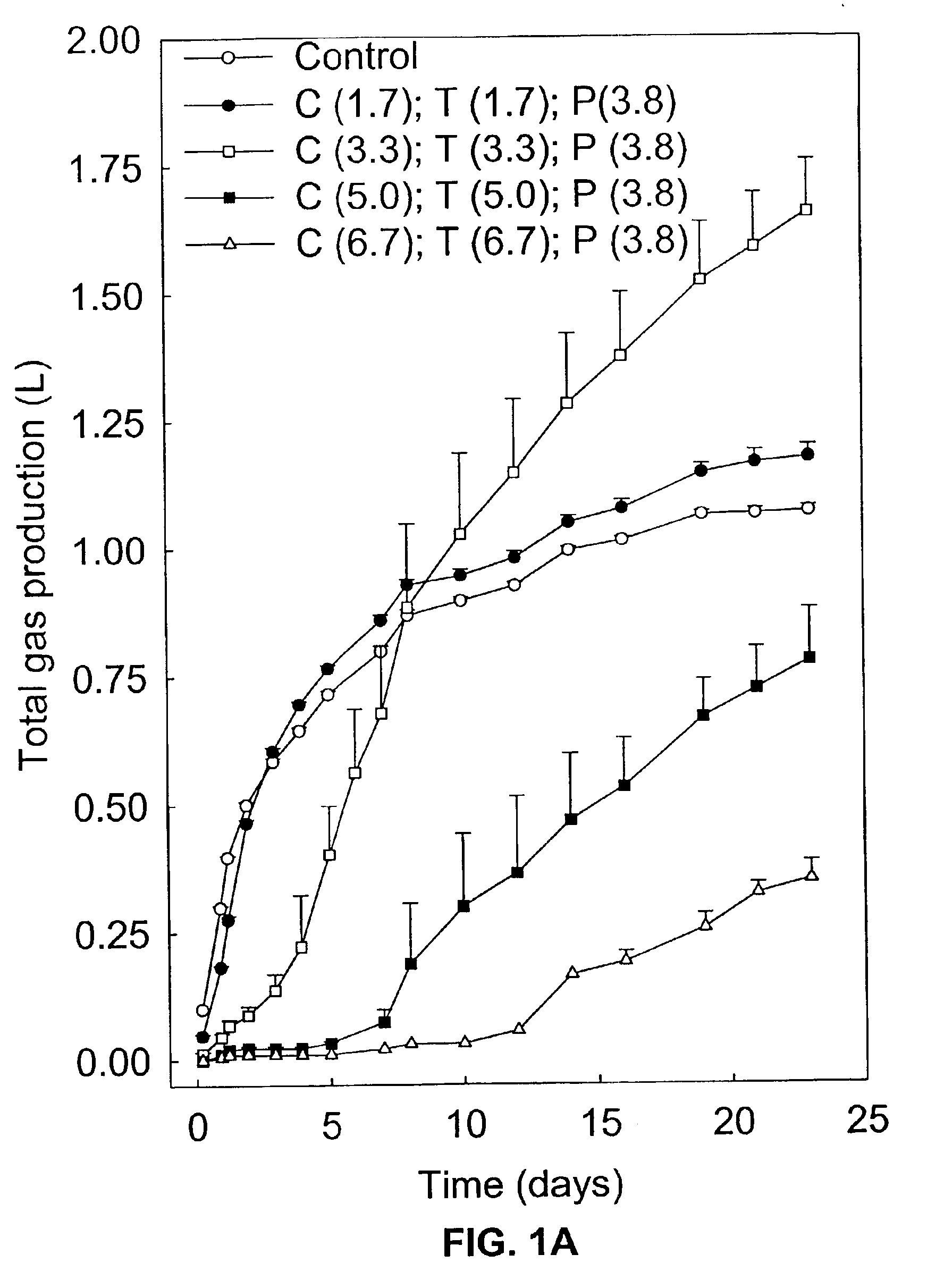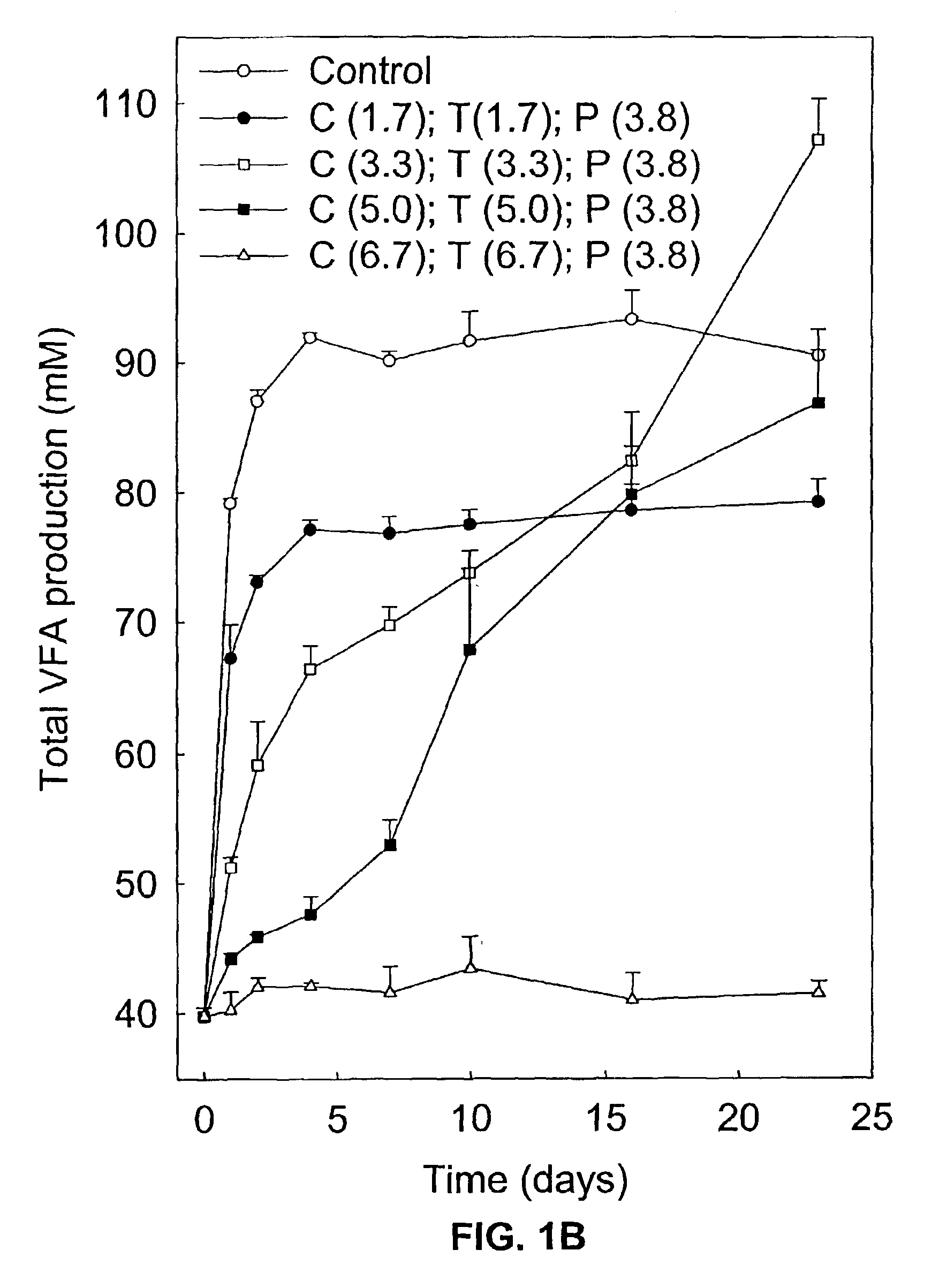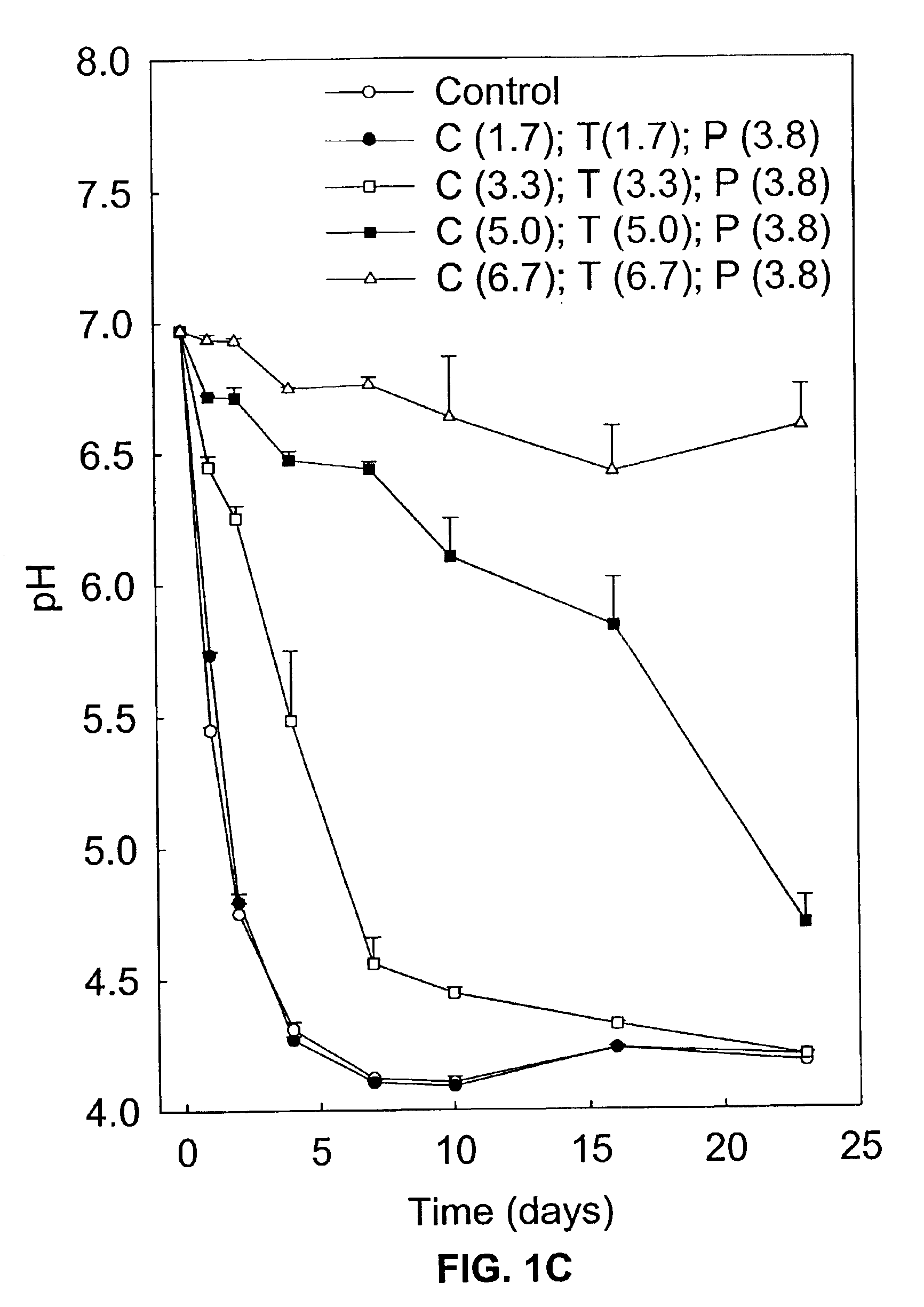Reduction of odor gases from waste using plant-derived oils
a technology of plant-derived oils and odor gases, which is applied in the field of reducing odor gases from waste using plant-derived oils, can solve the problems of inability to control the environment, offensive soil water and air quality threats, etc., to achieve the effect of reducing the production of gas and short-chain volatile fatty acids, promoting lactic acid accumulation, and quickly inhibiting fermentation
- Summary
- Abstract
- Description
- Claims
- Application Information
AI Technical Summary
Benefits of technology
Problems solved by technology
Method used
Image
Examples
example 1
The Effect of the Antimicrobial Plant Oils on Cattle Waste under Anoxic Conditions.
[0034]Waste was collected and processed in similar manner to the study described by Varel, V. H. et al. [Curr. Microbiol. (2000) 40:392-397]. The waste slurry was divided into 500-ml aliquots and plant oils (carvacrol, thymol and α-pinene) were added directly at the desired concentration. The slurry was blended 1 min to provide a homogenous mixing of the antimicrobial oils and poured into a 1-liter Erlenmeyer flask, which was sealed with a rubber stopper and left stationary at ambient temperature (25° C). Treatments were in triplicate, and the contents in the flasks were gently swirled before being sampled at the times indicated.
[0035]Gas volume and composition, short-chain volatile fatty acids, and L-lactate in the flasks were determined as previously described [Miller, T. L. et al., 1974, Appl. Microbiol. 27:985-987; Richardson, A. J. et al., 1989, Lett. Appl. Microbiol. 9:5-8; Varel, V. H., et al. ...
example 2
The Effect of the Antimicrobial Plant Oils on Cattle Waste under Natural Semi-Oxic Conditions (Lagoon / Basin Simulation).
[0039]Waste was collected and processed as in Example 1. The waste slurry was divided into 1-liter aliquots and poured into wide-mouth (10 cm) jars (17 cm tall, 13.5 cm diameter, 1.6-liters). The plant oils (carvacrol, thymol and α-pinene) were added to the slurry without stirring or mixing. Plastic lids provided with the jars were used to cover approximately 90% of the jar opening to prevent moisture loss over the 56-day experimental period. A wide mouth pipette was inserted into the slurry from top to bottom at which time slurry contents were simultaneously withdrawn. Total VFA production and butyrate production were measured as described in Example 1. The results are reported in FIGS. 2A and 2B.
[0040]The data in FIG. 2A indicate that carvacrol or thymol individually at 13.3 mM inhibited the production of short-chain volatile fatty acids equally or slightly bette...
example 3
The Effect of the Antimicrobial Plant Oils on Swine Waste under Anoxic Conditions.
[0041]Swine waste was processed similarly to the method described in Example 1. Fecal waste was randomly collected within 15 min of being excreted from animals fed a finishing diet of 85% corn and 11% soybean meal. Swine urine was collected from catheterized animals. Feces, urine, and distilled water in the ratio 50:35:15 were blended (Waring Inc., New Hartford, Conn.) for 1 min. Four replicate samples were obtained from this slurry and analyzed for various parameters and were considered as time 0. The waste slurry was divided into 500 ml aliquots and antimicrobial plant oils were added directly at the desired concentration, with one exception, in which carvacrol was dissolved 1:1 v:v in 95% ethanol, or 2 ml carvacrol / ethanol addition in these 500 ml slurries. The slurry was blended 1 min to provide a homogenous mixing of the antimicrobial oils and poured into 1-liter Erlenmeyer flasks, which were gass...
PUM
 Login to View More
Login to View More Abstract
Description
Claims
Application Information
 Login to View More
Login to View More - R&D
- Intellectual Property
- Life Sciences
- Materials
- Tech Scout
- Unparalleled Data Quality
- Higher Quality Content
- 60% Fewer Hallucinations
Browse by: Latest US Patents, China's latest patents, Technical Efficacy Thesaurus, Application Domain, Technology Topic, Popular Technical Reports.
© 2025 PatSnap. All rights reserved.Legal|Privacy policy|Modern Slavery Act Transparency Statement|Sitemap|About US| Contact US: help@patsnap.com



